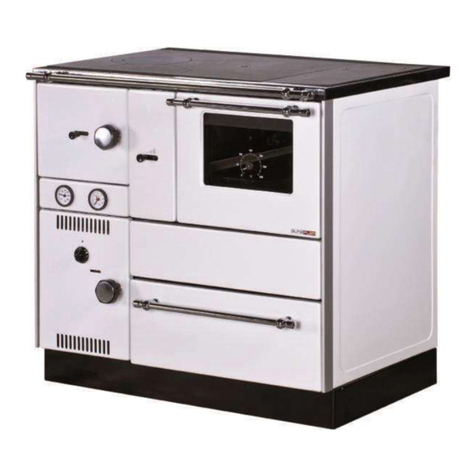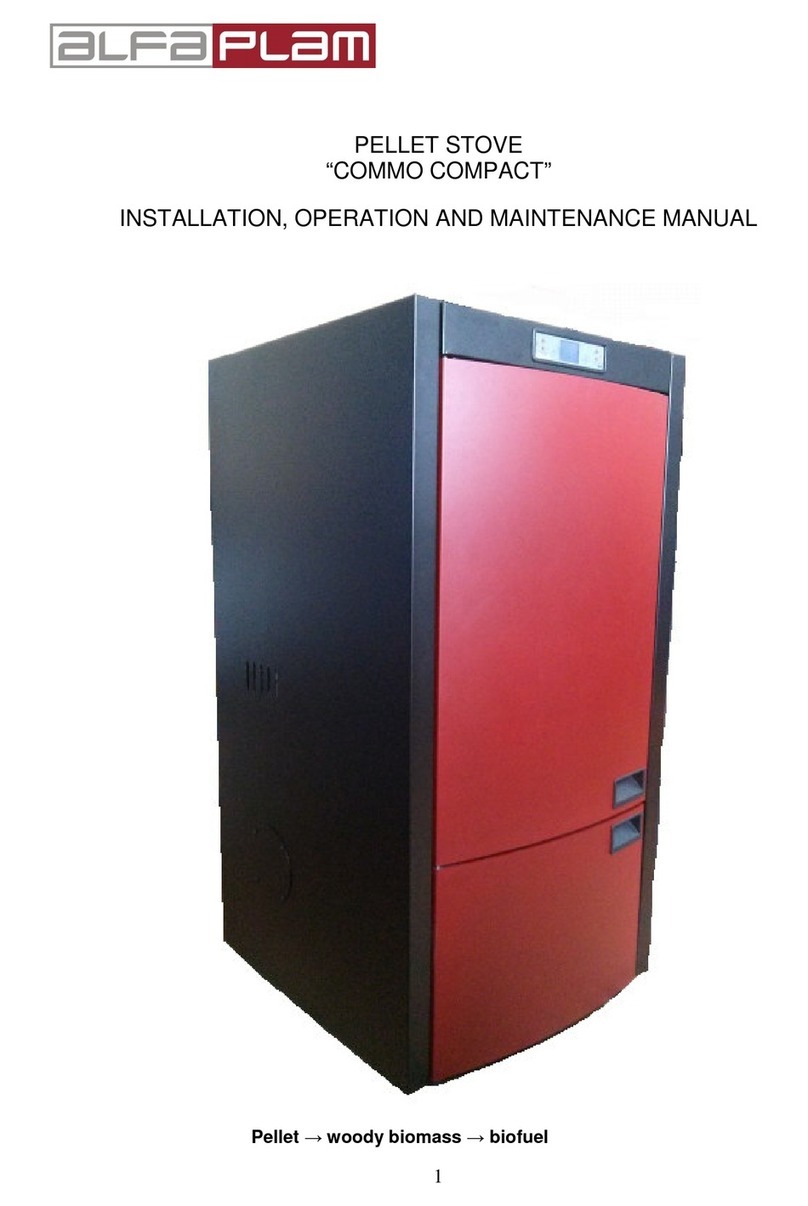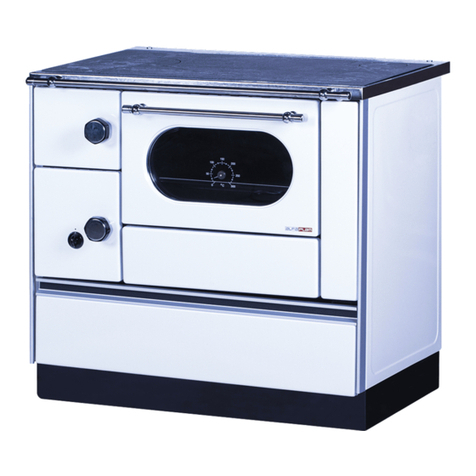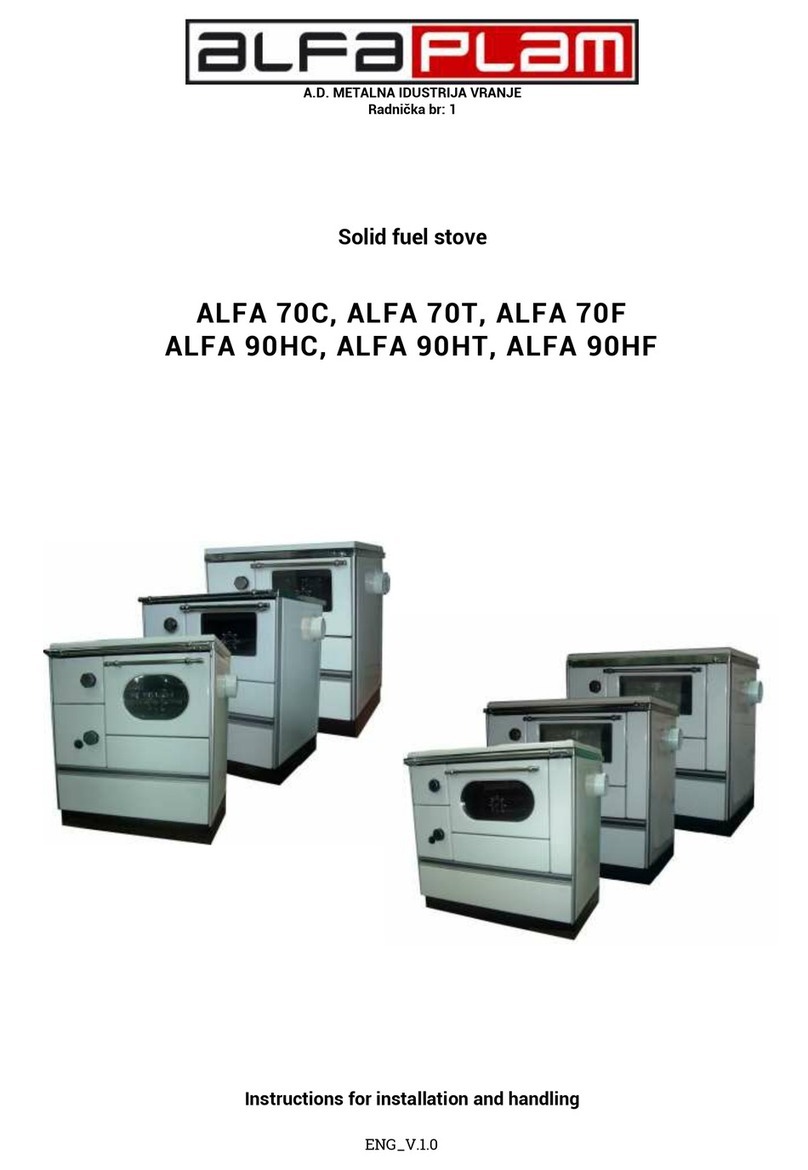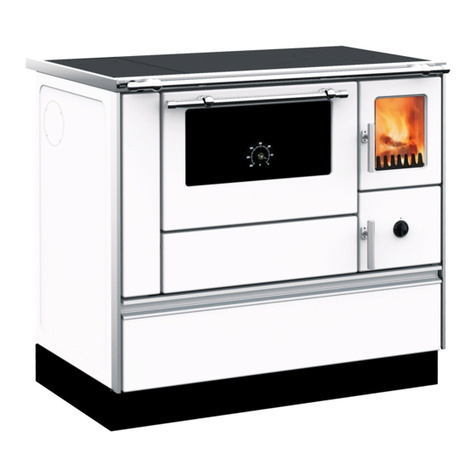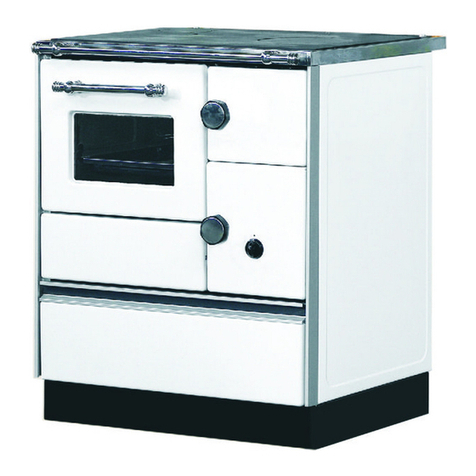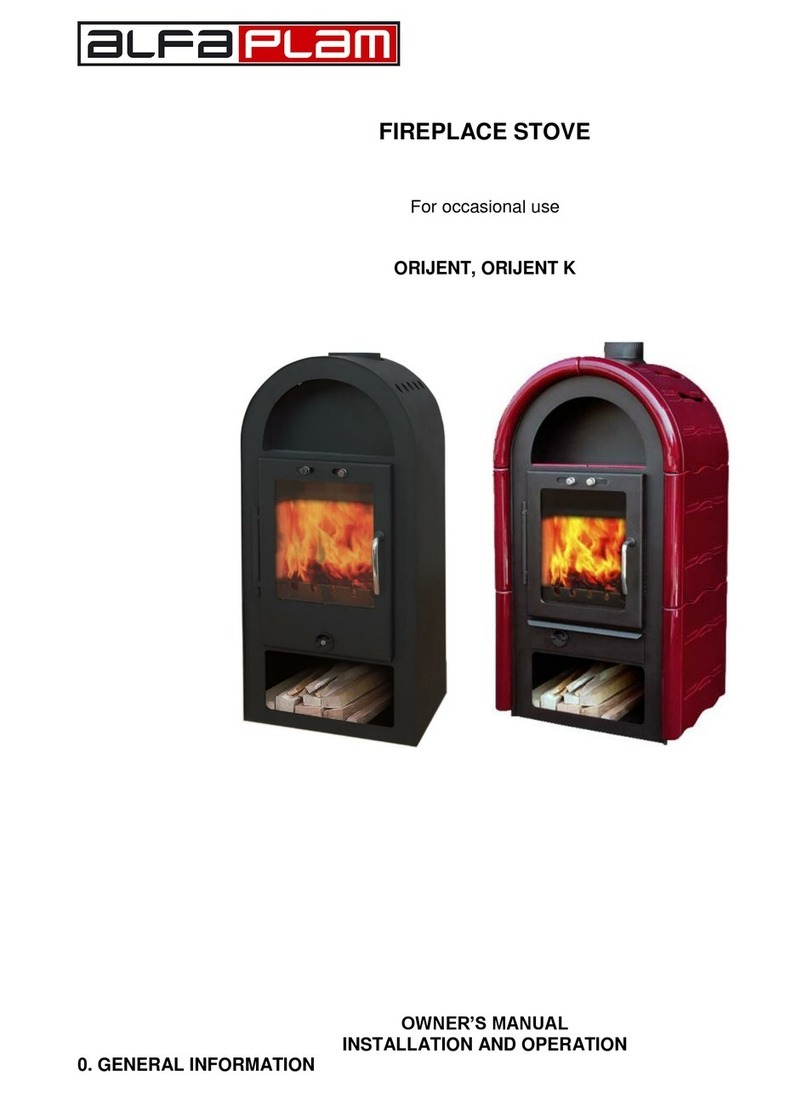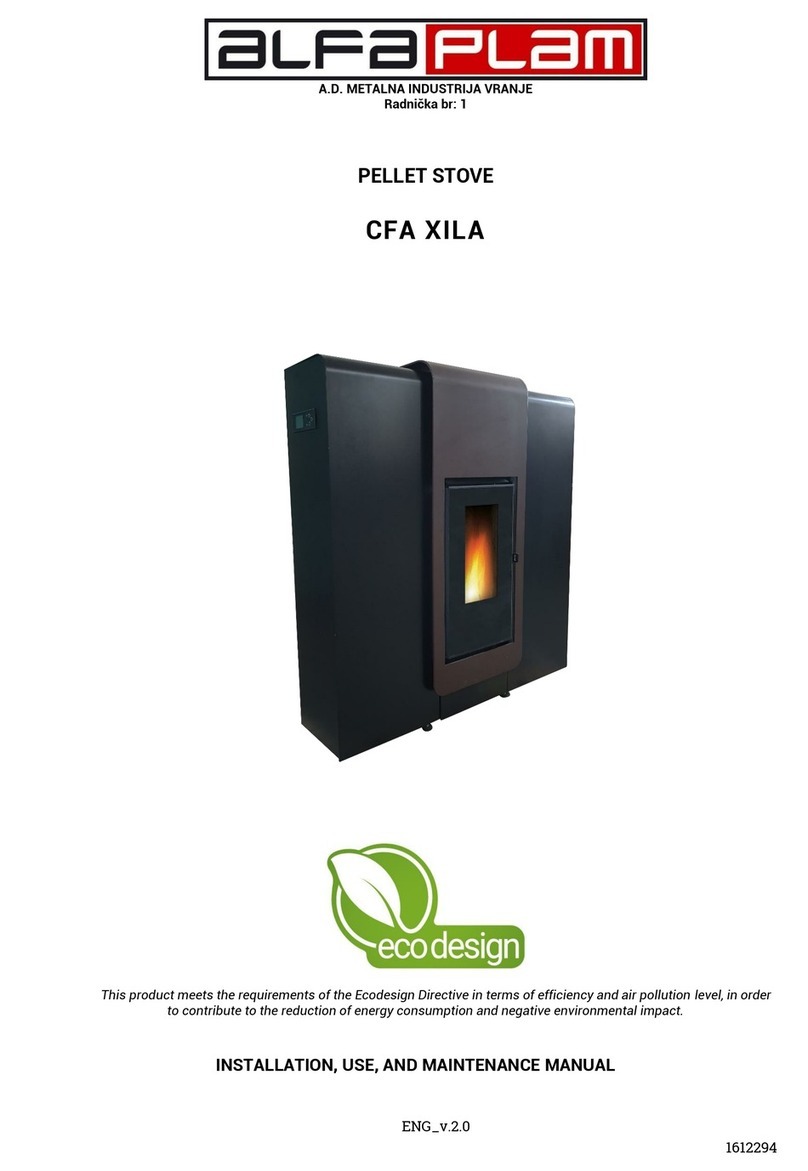
3
4.1. Fuelling
* Set the stopple handle in the “+’’ position, the heating stopple is opened
* Open the slide shutter handle for primary air at the greatest air release (Figure 3, item 9)
* Open the firebox door
* Put wooden wool, wooden sawdust or paper
* Put 2-3 small pieces of wood over it
* Ignite
* Close the firebox door
* Let the wood burn briskly
* After ignition, set the heating stopple button into the "-" position, the ignition stopple is closed.
4.2. Refuelling
After the basic ember is created, fuel should be added in the opening for loading. The slide shutter handle should be set
in the adequate place. When refuelling, be careful to open the firebox door slowly so that fuel gases are not drawn and, thus,
you will avoid flue gases entering the room. The rated heating capacity is achieved when you use the following quantities of
fuel and adjust:
Ensure that higher quantities of logs than necessary for the rated heating capacity are never loaded. The above quantity
of fuel should not be exceeded because overheating of the stove can occur.
Only naturally dried wood can be used according to the regulation on emission protection. Wood that is used must be dry
(residue of moisture, 20%). This is usually case if the wood is stored for two years in a dry place where there is a good
draught.
Wet wood has a low calorie value and leads to deposits of soot in flue canals and the chimney.
Wood with a treated upper surface (varnished, painted, veneered and impregnated), plywood, waste of any kind,
packaging waste, plastic, newspapers, rubber, leather, textile, etc., must not be fuelled.
Combustion of such matters pollutes the environment and is prohibited by the legislator. Furthermore, damages to the
chimney can occur. In that case, any warranty from the producer will be annulled.
Under unfavourable circumstances and insufficient draught, some obstacles can appear in the chimney in a way that flue
gases are not discharged in full. In that case, reasons in the chimney should be removed, otherwise, use of the stove is not
allowed for security reasons.
Note: Better fuel efficiency and thus better heating of the area is achieved by opening the door of the stove a little or in
full.
4.3. Cooking
4.3. 1. Cooking in th e summer
During hot days, the solid fuel stove is mainly used for cooking. The stove door is kept closed. It is best if you use a pot
with a reinforced bottom and adequate lids.
4.3. 2. Cooking in th e wint er
During cold days, the solid fuel stove is mainly used for room heating. For faster cooking, dry wood should be used.
The heating stopple must be closed, and the air control opened to the maximum.
After finishing the cooking, the air control should be set at the place for the rated heat capacity.
4.4. Baking of cakes and meat roasting
Baking of cakes and meat roasting require equally distributed heat. To achieve this equal distribution and sufficiently
high temperature, the stove door must be closed. Depending on the type of dish that is baked/roasted, the oven should be
pre-heated. If the stove is heated to the desired temperature, put the items that should be baked/roasted in the oven. Do not
allow creation of very strong embers and always add fuel in small quantities. High cake moulds should be put on the lower
rack of the oven. All cakes with such a form should be baked at moderate temperature. Both racks can be used with flat
cakes or pastry. Somewhat higher temperature of the oven is then recommended.
You need a significantly higher temperature for meat roasting than in case of cake baking. Thus, the time of preparation
(pre-heating) is somewhat longer and is necessarily required.
4.5. Fuelling in the transition period
With an outside temperature of more than 15◦C, a little fire occurs in the chimney as a result of low transport pressure.
This creates more soot in the flue canals of the stove and in the chimney. Increase the inlet of primary air, tending the fire
more frequently and refuelling (small pieces of slit log) more frequently so as to decrease soot in the transition period.
5. MAINTENANCE AND CLEANING OF THE STOVE
Regular maintenance and care, such as the cleaning of the stove, flue pipes and flue pipe extensions, are important for
safe operation and cost-effectiveness.
Maintenance of enamelled surfaces of the stove is only recommended when the stove has cooled down.




